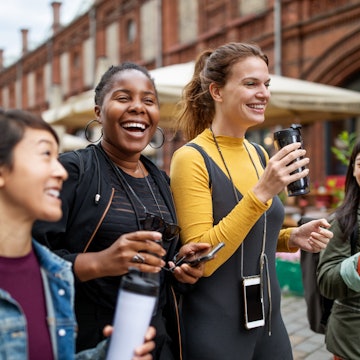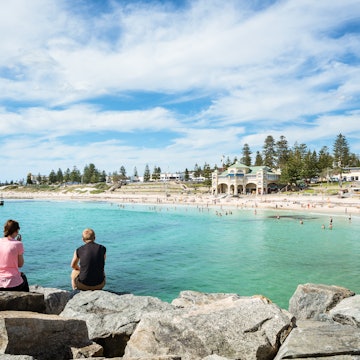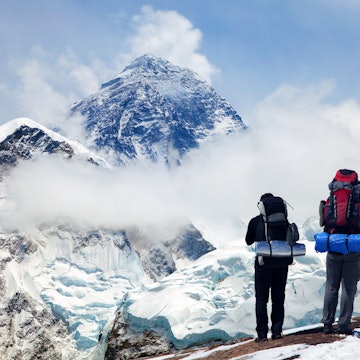

The call of the open road is strong, so here's how to road trip safely ©Putt Sakdhnagool/500px
This year, many Americans with a case of wanderlust are finding their cure on the open road.
According to a recent survey conducted by AAA, road trips will account for 80% of US travel this fall, continuing the pandemic-era vacation trend.
Nearly two years since COVID-19 altered the travel landscape, hitting the highway remains one of the most accessible options for travelers in need of an escape. For international excursions, travelers must navigate varied regulations, testing requirements, and other challenging considerations related to COVID-19. But when it comes to domestic getaways, vaccinated Americans have been given the green light.
“People can travel, but there are still some precautions to take,” says Dr. Sandra Albrecht, assistant professor of epidemiology at Columbia University and chief epidemiologist for the website Dear Pandemic. It’s important to note that the type of advice and recommendations offered by experts like Albrecht is two-tiered and depends on your vaccination status.
Here are the latest road trip rules so travelers can stay safe while driving from sea to shining sea.
1. Get vaccinated against COVID-19
“The main thing that travelers should do is get vaccinated—for their own good, but also for the good of the people in places they’re visiting,” says Albrecht. “Getting vaccinated is the best way to reduce the risk of severe illness, and certainly death, caused by COVID.”
Vaccination is also the key to greater freedom while traveling. “In many places, people will be limited in what they can do because of vaccine mandates,” says Albrecht. Some destinations—including New York City, where Albrecht lives—require proof of vaccination to attend indoor events and dine inside restaurants. Remember to travel with your vaccination card and bring a backup, like a digital vaccine passport.
Read more: How to manage vaccine certifications and COVID-19 passports for international travel
The CDC encourages unvaccinated individuals to delay any upcoming travel plans and get vaccinated as soon as possible. Those traveling with children who cannot yet receive the vaccine should follow the agency’s advice for testing, quarantines, and interacting with other people.
2. Wear a mask when appropriate
Just because it’s safe to travel doesn’t mean people should toss pandemic precautions out the window—it’s still possible to contract and spread the disease. The CDC recommends that vaccinated travelers wear masks in enclosed spaces like transportation hubs, stores, and indoor event venues. If transmission in the community you’re visiting is high, consider wearing a mask in crowded outdoor areas or when interacting with folks who might not be vaccinated.
“People should adhere to mask guidelines wherever they’re going—whether they agree with them or not,” says Albrecht. “We should be respectful of what businesses ask of their patrons.”
3. Consider where you’re going
COVID-19 continues to impact communities across the country, and travelers should assess the risks wherever they plan to visit. “I wouldn’t say there’s any place off-limits,” says Albrecht, “but there are considerations to keep in mind.”
Start by looking up the infection and vaccination rates where you’re planning to go. The New York Times offers an easily navigable COVID-19 guide with statistics for each US county followed by suggestions on how to stay safe in those areas. In many cases, participating in indoor activities presents a low risk for masked, vaccinated travelers—even when infection rates are high. Still, knowing the level of community transmission may influence your comfort level in public spaces like restaurants or theaters. It may also deter you from visiting a location at all. If an area’s hospitals are overwhelmed with COVID-19 patients, you may not be able to get necessary medical attention should an emergency arise. “As a vaccinated person, I also wouldn’t want to bring asymptomatic COVID to a place with low vaccination rates,” says Albrecht.
Next, check to see what travel restrictions and COVID-19 precautions—if any—are imposed by the state or territory you’re visiting. If you find a local government’s lack of COVID-19 regulations unsuitable, consider visiting somewhere else. The CDC provides a search platform where you can find each state’s current COVID-19 travel restrictions and resources; AAA’s COVID-19 Travel Restrictions Map serves up helpful visuals. Pandemic-related policies vary throughout the country, so plan on visiting locales that uphold your standards.
4. Check COVID-19 policies for businesses you plan to visit
Privately owned businesses can enforce different regulations than local governments. Before traveling, check to see how hotels, restaurants, and event spaces along your route mitigate the spread of COVID-19 so you can decide whether or not to visit.
In some boutique hotels—like Pilgrim House in Provincetown, Massachusetts—vaccines are mandatory for all overnight guests. Most hotel chains—like the Graduate—clearly list their COVID-19 cleaning protocols online. Various restaurants throughout the country require proof of vaccination for indoor dining, and performance venues may enforce strict mask mandates. If you can’t find information on COVID-19 precautions online, call the business for clarification.
Try your best to patronize places that prioritize the health of their employees and guests. “If places are not mandating vaccines, I would at least want to see mandates of mask use in public areas,” says Albrecht.
5. Plan your route in advance
As tempting as the spontaneity of the open road might be, flying by the seat of your pants can get you into trouble—particularly during the pandemic. Ellen Edmonds, the Public Relations Manager for AAA, recommends using AAA’s TripTik to map your route and determine where and when you’ll rest, eat, and find gas during your journey. “It’s a good idea to map your route ahead of time and make all overnight hotel reservations in advance so you don’t have to worry about it while you’re on the road,” she told Lonely Planet via email.
If logistics aren’t up your alley, Edmonds suggests consulting a knowledgeable travel advisor or travel agent who can help you navigate the decision-making process and provide assistance during or after your trip.
6. Make a backup plan
While planning is essential, adaptability is equally necessary for road trippers. As the Delta variant continues circulating, you might experience sudden business closures, cancelations, and changes to COVID-19 regulations while traveling. Prepare for these bumps in the road by considering alternatives if things don’t go as planned.
If you’re booking overnight stays or tourist excursions in advance, do so with flexibility in mind. Check for options with forgiving cancellation or exchange policies and think about purchasing travel insurance to safeguard your travel investment.
Because there’s still the risk of contracting COVID-19, it’s imperative to plan how you’ll handle getting sick while traveling. If you test positive for COVID-19, you may want to drive back home to quarantine.
7. Pack a 'coronavirus kit'
It’s necessary to travel with a first-aid kit, but the modern road trip requires a few pandemic-era updates. In addition to basics like bandages, pain relievers, antibiotic ointment, prescription medications, and hand sanitizer, don’t forget essentials like extra masks, a thermometer, and—if possible—at-home COVID-19 antigen tests. At-home tests are ideal if you’re experiencing COVID-related symptoms or if you participated in a high-risk activity and want to ensure you aren’t carrying the virus. Albrecht notes that these tests can be expensive and hard to find; if you can afford them, order a few online before leaving home.
Other items like healthy snacks and toilet paper are essentials for lengthy drives. “AAA always recommends keeping an emergency kit in your vehicle with a cell phone charger, flashlight, extra batteries, warning devices such as reflective triangles, and extra water,” adds Edmond.
8. Check your car
You’re not the only one who needs to be healthy to hit the road—your car needs to be in top shape, too. If your vehicle sat idle while you’ve been working from home this past year, it’s time to get a check-up.
“Your road trip will be over before it even starts if your vehicle can’t go the distance,” says Edmond. “Before any long road trip, AAA recommends getting a vehicle inspection to check key components like the battery, engine, tires, brakes and fluid levels.”
9. Get plenty of rest
According to the Sleep Foundation, the pandemic has wrought havoc on our sleep patterns—whether caused by the disruption of daily life, increased anxiety, or depression.
Long drives can exacerbate tired eyes. According to the National Highway Traffic Safety Administration, tired driving was responsible for 72,000 crashes in 2013. The Sleep Foundation says drivers should be on the lookout for signs that you’re too tired to drive, such as difficulty maintaining focus, disconnected thoughts, or drifting from your lane. If you’re feeling sleepy while driving, get off the road, take a 20-30 minute nap, or get some caffeine.
For more information on COVID-19 and travel, check out Lonely Planet's Health Hub.
You may also like:
What do I do if my flight gets cancelled—and can I get a refund?
PCR tests for travel: everything you need to know
















